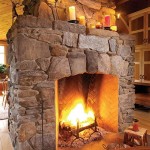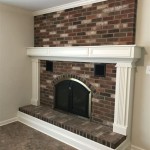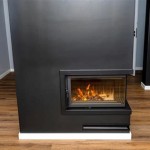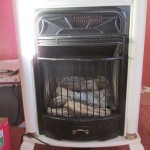The Enduring Appeal of the Stone Hearth Fireplace
The stone hearth fireplace stands as a timeless architectural element, offering functional warmth and aesthetic appeal to homes for centuries. More than just a heating source, it serves as a focal point, creating a gathering space and contributing to a sense of comfort and tradition. The enduring popularity of stone hearth fireplaces can be attributed to a combination of factors, including their durability, versatility in design, and the unique ambiance they create.
The term "stone hearth fireplace" encompasses a broad range of designs, varying in the type of stone used, the overall size and shape, and the construction techniques employed. From rustic, dry-stacked fieldstone to meticulously crafted, smoothly finished granite, the possibilities are virtually endless. This versatility allows homeowners to tailor the fireplace to their specific architectural style and personal preferences. The hearth, traditionally a non-combustible platform in front of the firebox, is often constructed of stone as well, further enhancing the fireplace's visual impact and functional safety.
The construction of a stone hearth fireplace is a complex process that requires skilled craftsmanship. The selection of appropriate stone is paramount, taking into consideration factors such as its resistance to heat, durability, and aesthetic qualities. Proper installation is crucial not only for the fireplace's longevity but also for ensuring safe and efficient operation. A well-built stone hearth fireplace can last for generations, becoming a cherished feature of the home.
Durability and Longevity
One of the primary advantages of a stone hearth fireplace is its exceptional durability. Stone, by its very nature, is a resilient material that can withstand extreme temperatures and the constant wear and tear associated with fireplace use. Unlike other materials, such as brick or wood, stone is less susceptible to cracking, warping, or decaying over time. This inherent durability translates to a longer lifespan and reduced maintenance requirements.
The choice of stone significantly impacts the overall durability of the fireplace. Certain types of stone, such as granite and slate, are known for their superior strength and resistance to heat. These materials are particularly well-suited for high-use fireplaces. Other types of stone, such as limestone and sandstone, may be more porous and require sealing to prevent moisture damage and staining. Proper sealing and maintenance can significantly extend the lifespan of any stone used in a fireplace.
The construction techniques employed also play a critical role in ensuring the fireplace's longevity. Proper mortaring and the use of high-quality materials are essential for preventing cracks and leaks. The foundation of the fireplace must be solid and stable to prevent settling, which can lead to structural damage. Regular inspections and maintenance, such as cleaning the chimney and inspecting the mortar joints, can help identify and address potential problems before they escalate.
The investment in a well-built stone hearth fireplace is an investment in the long-term value of the home. Its durability ensures that it will remain a functional and aesthetically pleasing feature for many years to come. This longevity, coupled with the timeless appeal of stone, makes it a desirable addition for prospective homebuyers.
Design Versatility and Aesthetic Appeal
The design versatility of stone hearth fireplaces allows for seamless integration into a wide range of architectural styles. From rustic cabins to modern minimalist homes, a stone fireplace can be tailored to complement the existing décor and create a cohesive aesthetic. The choice of stone, the shape and size of the fireplace, and the surrounding mantel and hearth can all be customized to reflect the homeowner's individual taste.
The use of natural stone provides a unique texture and visual interest that is difficult to replicate with other materials. The variations in color, pattern, and texture create a sense of depth and character, adding warmth and personality to the room. The natural beauty of stone can be further enhanced through various finishing techniques, such as polishing, honing, or sandblasting, to achieve the desired look.
The size and shape of the stone hearth fireplace can be adapted to suit the dimensions of the room. A large, imposing fireplace can serve as a dramatic focal point in a spacious living area, while a smaller, more understated fireplace can add a touch of warmth and charm to a cozy den or bedroom. The shape of the fireplace can also be customized, from traditional rectangular designs to more contemporary curved or angled shapes.
The surrounding mantel and hearth offer additional opportunities for customization. A wooden mantel can add a touch of warmth and traditional elegance, while a stone mantel can create a more modern and minimalist look. The hearth can be constructed of the same stone as the fireplace or a contrasting material to create visual interest. Decorative tiles or inlays can also be incorporated into the hearth to add a personal touch.
The versatility of stone hearth fireplaces allows homeowners to create a truly unique and personalized design that reflects their individual style and enhances the overall aesthetic of their home. The natural beauty and timeless appeal of stone ensure that the fireplace will remain a cherished feature for years to come.
Ambiance and Functional Benefits
Beyond its visual appeal, a stone hearth fireplace provides a unique ambiance that cannot be replicated by other heating methods. The crackling sound of the fire, the flickering flames, and the radiant heat create a sense of warmth and comfort that is both physically and emotionally satisfying. This ambiance makes the fireplace a natural gathering place for family and friends, fostering a sense of connection and relaxation.
The radiant heat produced by a stone hearth fireplace is particularly effective at warming a room. Radiant heat warms objects and people directly, rather than heating the air, resulting in a more even and comfortable distribution of warmth. This type of heat is also less drying than forced-air heating, which can contribute to dry skin and respiratory problems.
A stone hearth fireplace can also serve as a reliable source of supplemental heat during power outages. In the event of a power failure, the fireplace can provide a source of warmth and light, making it a valuable asset during emergencies. This is particularly important in areas that are prone to severe weather or other events that can disrupt the power grid.
In addition to its functional benefits, a stone hearth fireplace can also increase the value of a home. Its timeless appeal and enduring durability make it a desirable feature for prospective homebuyers. A well-maintained stone fireplace can add significant value to a property, particularly in areas where fireplaces are common or highly valued.
The ambiance and functional benefits of a stone hearth fireplace make it a valuable addition to any home. Its ability to provide warmth, comfort, and a sense of connection makes it a cherished feature that can be enjoyed for generations.
The construction of a stone hearth fireplace often involves a multi-stage process. First, a suitable foundation must be constructed to support the weight of the structure. This may involve pouring a concrete slab or building a reinforced masonry foundation. The firebox, the central chamber where the fire burns, is then constructed using fire-resistant materials such as firebrick. A chimney, designed to safely vent smoke and gases, is connected to the firebox. The exterior of the fireplace is then clad in stone, carefully chosen and arranged to create the desired aesthetic. The final stage involves constructing the hearth, the non-combustible area in front of the firebox, often made of stone as well.
Maintaining a stone hearth fireplace is essential for safe and efficient operation. Regular chimney sweeps are necessary to remove creosote buildup, a highly flammable substance that can accumulate in the chimney. The firebox should be inspected regularly for cracks or damage, and any necessary repairs should be made promptly. The mortar joints between the stones should also be inspected and repaired as needed to prevent leaks and structural damage. Proper maintenance will ensure that the fireplace remains a safe and reliable source of heat and enjoyment for many years to come.

Warm Up This Winter With A Natural Stone Fireplace

How To Choose The Right Fireplace Heart Design And Material Hearth Stone Remodel

A Stonehouse York Reclaimed Stone Hearth Fireplaces

Natural Stone Hearths Customizable Grey Sandstone Primethorpe Paving

Professional Stonework Stone Fireplace Surround Hearths

9 Indoor Fireplaces That Will Bring Warmth And Charm To Your Home

Stone Fireplaces

Stone Fireplaces Hearths Rockford

How To Clean A Limestone Fireplace

Stone Hearth Fireplace Old World Stoneworks
Related Posts








